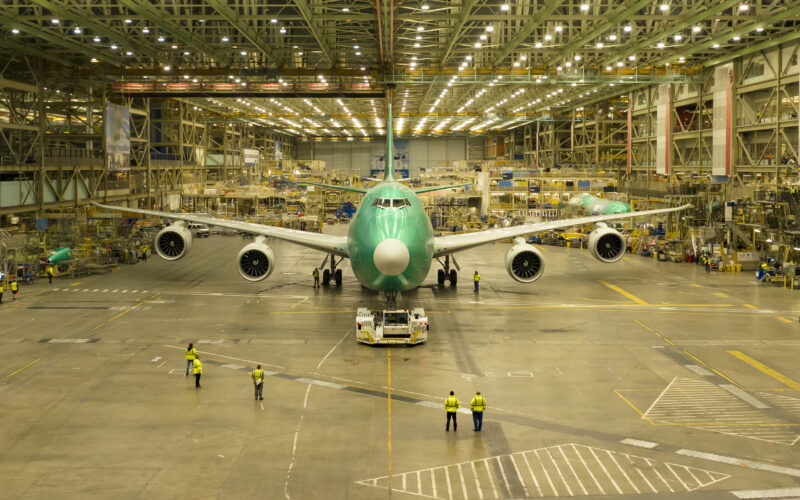Queen of the sky hands over her crown as Atlas Air gets the last 747 produced

Boeing delivered the final 747 aircraft to Atlas Air, which will operate it on behalf of Apex Logistics, a subsidiary of Kuehne+Nagel, on January 23, 2023. The bittersweet moment marks the end of a 55-year production run of the Queen of the Skies, resulting in 1,574 units being built in Everett, Washington, the United States.
The aircraft, a Boeing 747-8F, Manufacturer Serial Number (MSN) 67150, registered as N863GT, was handed over to Apex Logistics in a ceremony at its manufacturing site, in front of current and former employees, customers, and suppliers.
Dabbed in a mixed Atlas Air and Apex Logistics livery, the aircraft’s lack of special commemoration of the 50-decade-long production run caused quite a stir among aviation enthusiasts once the Boeing 747 left the paint shop at Portland International Airport (PDX).
However, a decal honoring the late Joe Sutter, known as the father of the Boeing 747, was affixed to the front right-hand side of the aircraft, with the words “Forever Incredible.”
Ending a 55-year run
While the last variant of the 747, namely the -8F and -8I (Intercontinental), was not hugely successful, the Boeing 747 has remained one of the top-selling wide-body aircraft in the history of commercial aviation.
Boeing announced the last generation of the 747 in 2005, and the 747-8 flew its first commercial flight on October 12, 2011. The aircraft entered the world just as it left the Global Financial Crisis (GFC) behind, with cargo volumes still lagging behind the levels it saw in 2008.
Furthermore, airlines and passengers alike began to shift away from the hub-based way of travel, opting for direct, point-to-point flights that would eliminate the need for large aircraft, including the 747 and Airbus A380.
In total, the two manufacturers delivered 407 units, split into 156 747-8 and 251 A380s, including the last Queen of the Skies that was handed over to Atlas Air.
Passenger production of the 747-8 stopped in 2017, with a few 747s being delivered to unidentified customers in 2017 and 2021, per Boeing’s Orders and Deliveries data. Throughout its 55 years of production, the manufacturer delivered a total of 1,300 passenger version aircraft of the Queen of the Skies, including Combi variants, and 274 freighters.
Unexpected success
Once the double-decker made its debut with Pan Am in January 1970, the aircraft was credited with enabling even more people to travel the world, as economies of scale lowered the total seat costs for airlines. In turn, ticket prices also dropped.
At first, the Boeing 747 was never supposed to become a staple of the manufacturer’s product lineup. As the world was experiencing a supersonic transport (SST) craze, engineers and designers planned for the 747 to eventually become a cargo-only aircraft, while the Boeing 2707, a supersonic jet, would compete with Concorde in the new class of aircraft.
However, a financial downturn, and the government’s concerns over the pollution and noise, including the effects of sonic booms, led to the cancellation of the 2707, paving the way for the Boeing 747 to seize the throne for more than five decades.
Only the Boeing 777, which made its commercial debut with United Airlines in June 1995, has become the more popular wide-body aircraft with more than 1,700 deliveries as of December 31, 2022, with a further 303 jets in the net backlog.
Two very special Boeing 747 aircraft are yet to be delivered, as the manufacturer is currently working on the newest iteration of Air Force One, the US Presidential aircraft. The current Air Force One, the VC-25A, was converted from a 747-200B airliner in the late 1980s to early 1990s and entered service as Air Force One in 1990.
The company used two 747-8 airframes that were not taken up by customers and is converting them according to the US Air Force’s requirements. The two jumbo jets are being turned into VC-25B aircraft at Boeing’s facilities, with the first scheduled to be delivered in September 2026.
